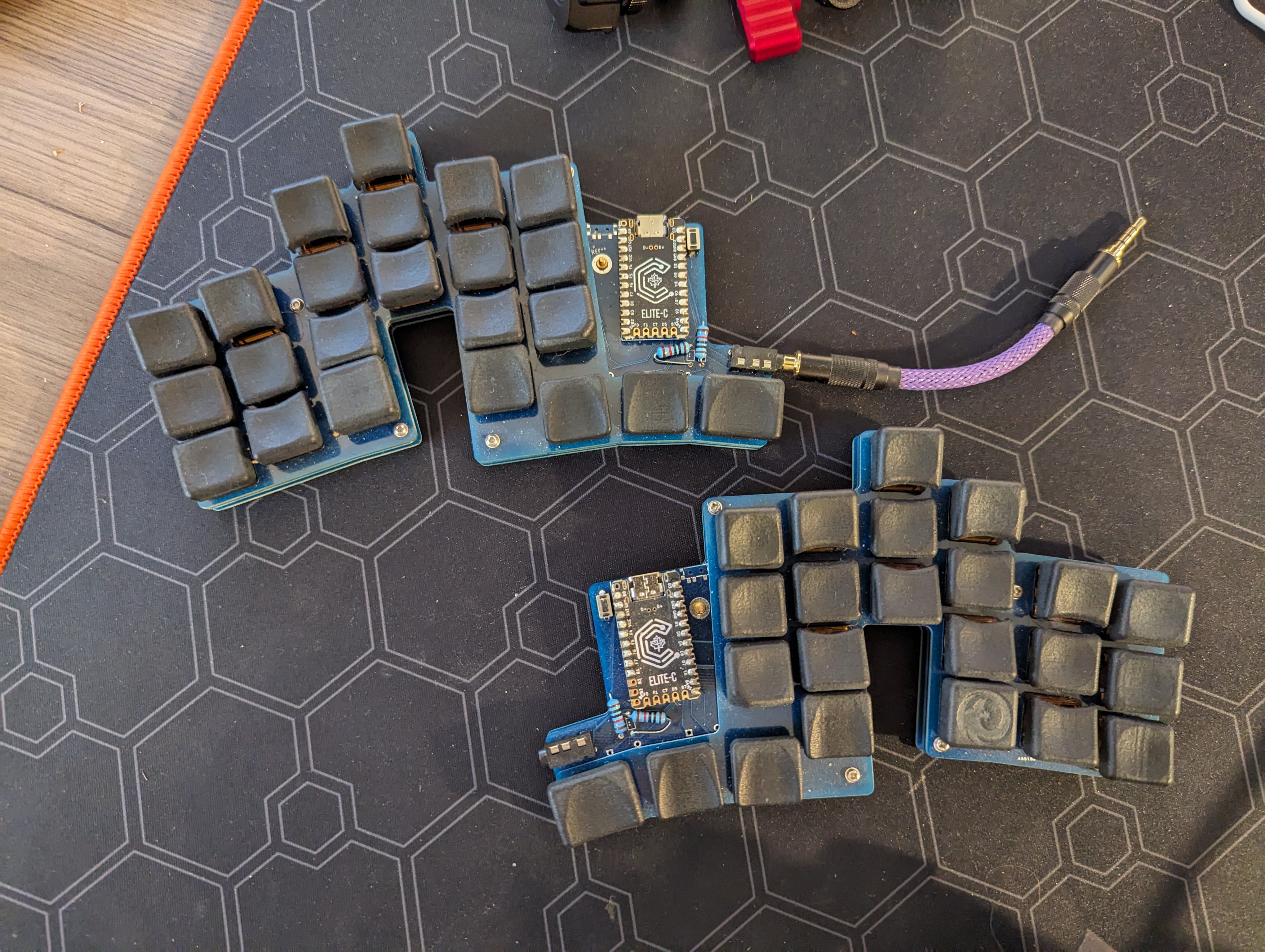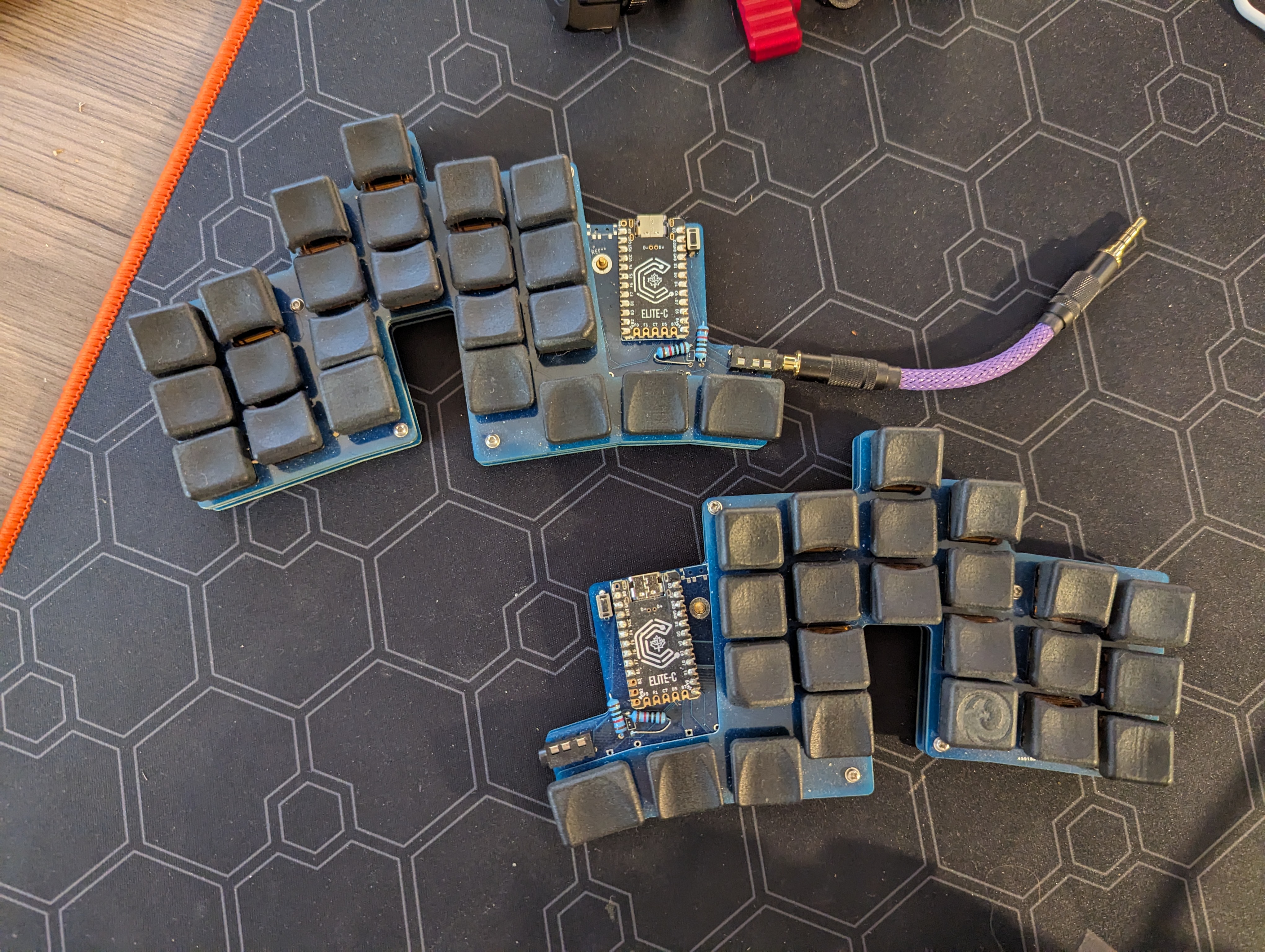Yes sunsets are definitely my favorites as far as chocs go. Currently using a mostly Mx board but a few of the thumb switches are sunset chocs.
If I had to nit pick they are a little scratchy and having the tactile feel closer to the actual switch activation would be nice. But it’s not like there is the wealth of options that exist on the mx side.





This is the correct peripheral to keep between your splits.